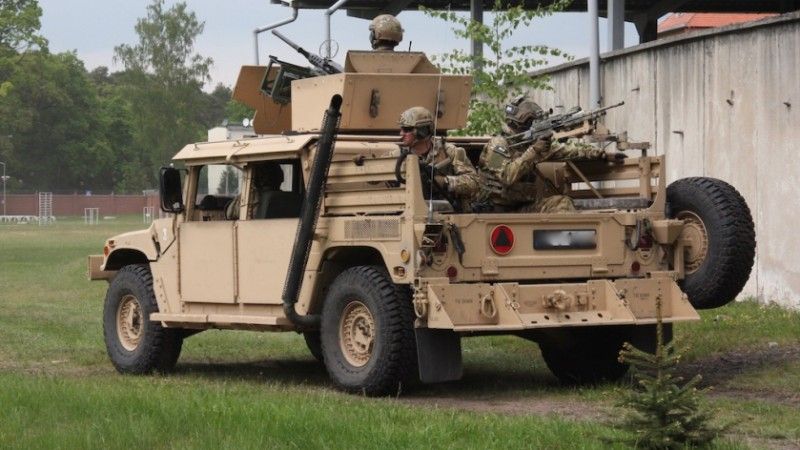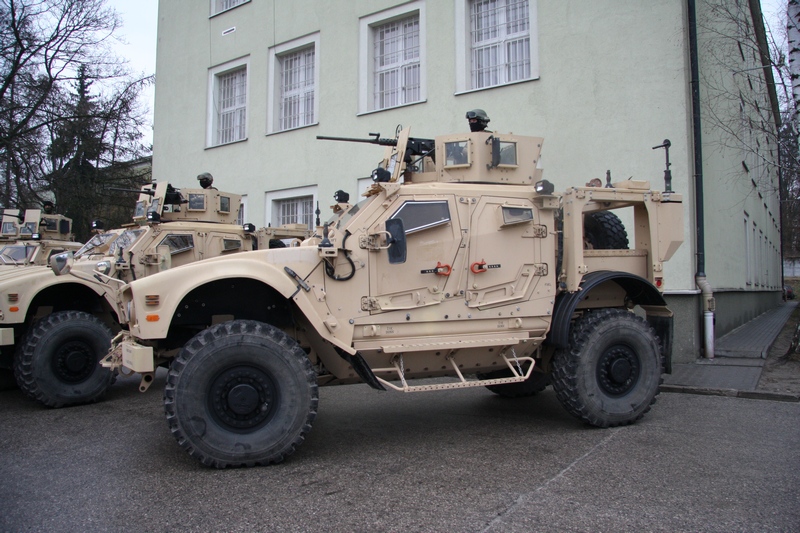Pegaz Programme: A Fiasco? [COMMENTARY]

On 27th July 2021, information was published by the Armament Inspectorate of the Polish MoD, on the cancellation of the procurement of multi-purpose vehicles for the SOF component (also known as Pegaz). The procurement process in question has lasted since May 2019. It was being carried out as a negotiation.
The document that was released on 23rd July includes an expansive actual and legal justification of the decisions that have been made. What may be surprising, given the two years of the canceled programme's existence, and the Pegaz programme as a whole is the reasoning behind this decision. The user (Special Operations Forces) has indicated the necessity to change the terms of reference description, stemming from the "user-introduced adjustment of the concept of the use of the Multi-Purpose SOF vehicles, resulting on the grounds of the current specifics of operations carried out by the Special Operations Component, in both national, as well as allied setting". This specifically refers to the missions in which the WPWS (Multi-Purpose SOF Vehicles) would be used, during which NATO Secret/Secret information would be processed.
When the procurement procedure was originally announced in 2019, the potential contractors were required to deliver capabilities to process “Restricted” level information, along with the capacity to process the data within certified ICT systems the operator owns.
Let us recall, four potential bidders were approved to take part in the next stage of the acquisition: H. Cegielski – Poznań S.A. along with Arquus France, a consortium formed by Huta Stalowa Wola S.A and TATRA Export s.r.o. , AMZ Kutno S.A., and Thales Polska Sp. z o.o.
The evolution of the use concept and the entailed necessity to remain in possession of NATO Secret/Secret credentials - which shall apply to the whole lifecycle, and the design stage, in particular, created a "requirement to change the description of the subject of the order, and, consequently, change the subject requirements (...)".
This meanwhile translates into a necessity to maintain confidential information credentials reaching levels higher than the one required during the qualification of bidders. Furthermore, the potential contractors would need to present proof of their experience, in working on orders as such. Change as such would also entail a necessity to change the content of the order. In the light of the regulations of Article 38, section 4 b of the Public Procurement Law, changes as such are not permissible.
As the announcement on cancellation of the procurement process reads, "the above leads to a situation in which the procurement process is burdened with a legal defect that cannot be rectified at the current stage, and that makes it impossible for the bidders taking part in the present procurement to submit their offers and conclude a valid agreement on the public procurement".
Thus, according to Article 95 section 1 subsection 7 of the Public Procurement Law, discussing the invalidation of procurement by the Ordering Party, if the procurement is burdened with a defect that is not rectifiable, making it impossible to conclude an agreement that would not be invalidated concerning public procurement, the Armament Inspectorate decided to cancel the procurement procedure aimed at the acquisition of multi-purpose vehicles for the SOF component.
One may assume that the NATO Secret/Secret clause requirements did not refer, specifically, to the design of the vehicle, its drivetrain, engine, or frame, but these rather concerned the vehicle’s C4ISR elements - that were to be acquired along with the vehicles.

Pegasus’s Oddysey
Even though the announcement also included information suggesting that the Inspectorate is willing to launch another procurement immediately, it is difficult to make any assumptions now, given the story of the Pegaz (Pegasus) programme, when it comes to deadlines or quantities.
Let us recall that the conceptual work aimed at developing the operational requirements for the SOF vehicle began in 2011. Some elements of the technical requirements were also mentioned there. They have become a foundation for the analytical/conceptual phase launched by the Armament Inspectorate in 2012, and the subsequent RFI/compliance survey.
It was assumed that 500 vehicles would be procured between 2014 and 2020, within the Pegaz programme, 200 of which were to be specifically received by the SOF component. According to the original plan, the Polish commandos were to receive the first vehicles in 2015. The remainder of the vehicles were to be received by the Army: air cavalry, highland infantry, and armored/mechanized units.
Combat variant (4- or 5-seats, also with equipment making the platform suitable for water operations), and command variant (4 seats) were to be acquired.
Common technical requirements were defined for SOF/Army vehicles, including:
- 4x4 drivetrain, independent suspension,
- Gross weight of up to 11,000 kg and at least 2,000 kg payload capacity,
- Range on hardened/dirt roads - 600/400 km
- Top speed on hardened/dirt roads - 100 kph/60 kph
- Wading depth - without and with preparation: 0.6/1.2 m,
- Operating temperature range from –30° to +50 °C,
- F-54/F-34 fuel compatibility (diesel/universal fuel)
The Rosomak S.A. company was also involved in the programme. Jointly with the foreign partner, it was to be responsible for deliveries of those vehicles. They were to be assembled, or manufactured, at the facility in Siemianowice Śląskie. This is why polonization and Transfer of Technology for Rosomak S.A. were also being taken into the account.
The Technical Modernization Plan for the period between 2017 and 2022 assumed that 105 Pegaz platforms would be acquired for the SOF component, and the Military Police (Gendarmerie). After 2023 several hundred vehicles were to be procured for the Army. Apart from the applications mentioned earlier, specialist variants were also to be procured (command variant for instance). Thus, they would replace the specific purpose WD-43 (UAZ-469B), ZWD-99baT, ZWD-3, or ZWD Rega-1 (Honker) vehicles.
As we know, the above plan resulted in a fiasco. It was ultimately planned that only 15 Pegaz vehicles would be procured, with an option of acquiring another 90 cars.
WPWS Pegaz is one of the examples of a relevant procurement that has been executed ineffectively, thus hampering the modernization of the Armed Forces. Along with the Mustang programme it could serve as a counterpart of the Australian Land 121/Overlander acquisition, resulting in a qualitative replacement of several vehicular platforms. Even the current “Little Mustang” procurement process does not solve the numerous issues tied to the specialist bodyworks based on UAZ and Honker vehicles.
JLTV Ahead?
Would off-the-shelf procurement of the JLTV (Joint Light Tactical Vehicle) platform be a solution here - similarly as it happened in the case of the F-35 or the Abrams MBTs? Let us recall - Rosomak S.A. has signed a memorandum of understanding with Oshkosh Defence in May 2021. The memorandum is to ensure "manufacturing, training, and maintenance for 4x4 vehicles operated by the Polish Armed Forces, and vehicles that would emerge in the future Polish medium and heavy wheeled tactical vehicle programmes". Rosomak S.A. has also become the authorized and preferred contractor for Oshkosh, back in 2019, and it provides maintenance for 45 M-ATV M1240A1 vehicles operated by the SOF component. Poland received these in 2015, as a gift from the United States of America.
JLTVs were also marketed in Poland by Oshkosh Defence a few years back, with the Pegaz programme in mind, despite the lack of compliance in the gross vehicle weight - the Oshkosh's platform is far heavier. Maybe the US design is the serious contender to become the Pegaz platform?
